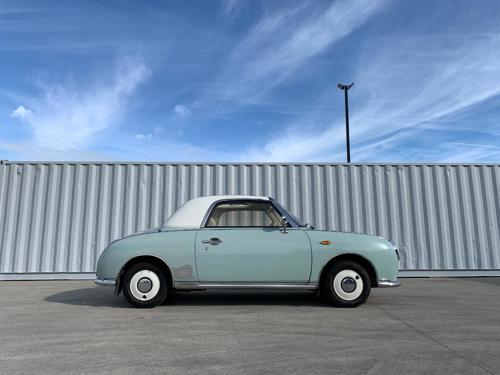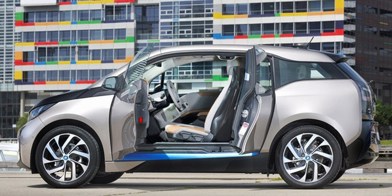In some way, we probably all have a bit of OCD. Mine is getting the small details fixed and sorted, and it’s so very satisfying.
Since buying this rare 1991 Nissan Figaro a few months back, I’ve spent the majority of the time fixing and fiddling: all those little small things that just take time – which isn’t a common commodity with this job and three kids.

However, it’s been getting there: I’ve replaced the turbocharger, fixed the temperature gauge, checked the brakes and mechanicals which all seem very, very good for a 33yo car. I’ve fitted new door strikers, a new front badge, new numberplates for a new identity, new rubbers and seals, and been trying to halt the many oil leaks, with the final one in the sights following the arrival of the new cam timing belt.

I’ve also had a replacement distributor cap sent via the very supportive and professional GarageFK10 in the UK: delivered, a porch pirate thief got into the package and emptied everything all over the driveway before realizing it was merely a distributor rotor, few rubber seals and a dizzy cap which they dropped and smashed. Clearly not their fault, Garage FK10 sent out a replacement, which was very much appreciated. So with new sparks fitted, there was one single, remaining fault to fix: the fuel gauge.
It had been showing full when purchased, so just to be sure, I filled it at a local station, and sure enough, $3 of fuel later, it was spilling out the spout. So it’s was definitely full.

But after a few hundred kays of driving, it hadn’t moved. The Figaro may be a 1.0-litre four-cylinder, but it’s not ‘that’ economical, so after refilling it again to confirm it had indeed used 20 of its 40 litre capacity, while the gauge was sweeping from empty to full on startup, that’s where it stayed – likely a short circuit of some kind.
While there is an access port under the rear bench seat, it’s silly small, and removing the fuel sender unit is simply not possible – in fact, the only thing possible is checking the resistance of the fuel wires coming from the fuel gauge float, which yielded nothing.

So, the fuel tank was dropped, a relatively simple process by disconnecting its wiring plug, then underneath for four bolts, three fuel lines, and the fuel filler hose.... and a tricky top breather pipe. It all took about 30 mins to learn, release and drop.

The fuel sender/pump unit was then unbolted and lifted from the top of the tank to reveal… no sender unit! What!? Seems a previous owner/mechanic had removed the entire sender electrics and float assembly for some inexplicable reason, and the yellow sensor wire was simply cut… and no, it wasn’t floating around in the tank, either (which was drained and cleaned to remove the crud).

Sourcing a new sender was not easy… kind of. The Figaro Shop and GarageFK10 are the global go-tos for Figaro support, but with prices quoted at £250 plus shipping to NZ (for a used unit), that was NZ$700 I was not keen on spending.
But, as luck would have it, one was listed on TradeMe for $300. Deal done and collected within a few days.

Back to the garage, the new sender was plugged into the car and bench-tested… nothing. No sign of life, and with no fuel light on the Figaro, and multimeter resistance testing proving confusing and unfruitful, fingers were crossed, and it was fitted into the tank, hoping the fuel would somehow help complete the circuit.
Still nothing. Argh!

After a few days to mentally compose, the tank was dropped once again, and the sender unit removed, the float wiped empty to full dozens of times to remove any corrosion on the contacts, and the plug terminals cleaned; it was tested on the benchtop again with a multimeter, but with similarly unsatisfying results (I get volts, but Ohms still gets me). Nothing.

Simply for the sake of it, I plugged in back into the car’s wiring, and abracadabra, it worked! I can’t explain why, but it brought the gauge alive and started working perfectly.
I gingerly refitted it to the tank, refitted the tank to the car, reattached everything with a dose of hope and turned the key: eureka! A fully working fuel gauge, again.
That kind of satisfaction of fixing it yourself just can’t be bought, and ensures the elimination of range anxiety of not knowing if and when it could run out of fuel. Thumbs up emoji!
BREAK IT DOWN
1991 Nissan Figaro
ENGINE: 1.0-litre turbo petrol four
POWER: 56kW/106Nm
0-100KM/H: 12.9 sec (claim)
GEARBOX: 3-speed auto
WEIGHT: 810kg
ECONOMY: 7.4l/100km





